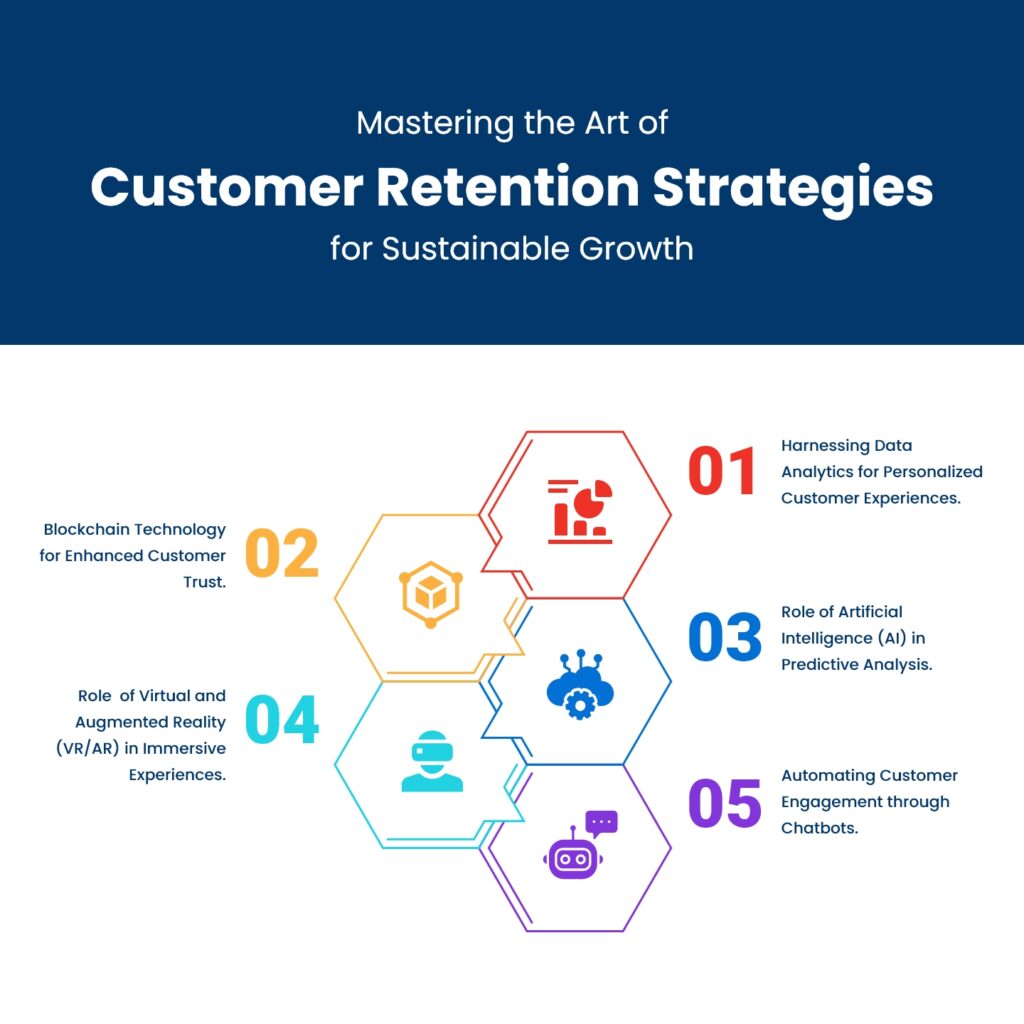In the rapidly evolving landscape of business, customer retention strategies have become the linchpin for sustainable growth. As technology continues to advance and markets become increasingly competitive, companies are recognizing the pivotal role of retaining existing customers in ensuring long-term success. According to Yieldify’s “Personalization After COVID-19” report, customer retention has now become the top goal for e-commerce websites, standing at 59%. In this article, we will explore the technological and scientific facets of mastering the art of customer retention strategies to achieve sustainable growth.
Understanding the Importance of Customer Retention Strategies:
Customer retention strategies are essential for businesses aiming to secure a solid foundation for growth. In many industries, the top five players on the market have an average customer retention rate of 94%, whereas in terms of factors that impact customer retention, 89% of companies admit excellent customer service is critical. This underscores the financial significance of prioritizing customer retention as a core business strategy. Scientifically, the principle of customer lifetime value (CLV) quantifies the predicted revenue a customer will generate throughout their relationship with a brand. By incorporating CLV into decision-making processes, businesses can tailor their customer retention strategies for optimal returns.
For instance, in case of customer retention, recommender systems can be a game charger. They have evolved with advancements in artificial intelligence and big data analytics. Modern recommender systems go beyond simple product suggestions, incorporating complex algorithms to consider a multitude of factors. A streaming service might utilize collaborative filtering to recommend movies or shows based on the viewing habits of similar users. By continuously refining its algorithms through machine learning, the system adapts to changing preferences, keeping customers engaged and satisfied.

Harnessing Data Analytics for Personalized Customer Experiences:
Advancements in data analytics have revolutionized the way businesses approach customer retention. By leveraging big data, companies can gain invaluable insights into customer behavior, preferences, and pain points. This data-driven approach enables the development of personalized customer experiences. Machine learning algorithms can analyze vast datasets to identify patterns, allowing businesses to anticipate customer needs and offer tailored solutions. Integrating data analytics into customer relationship management (CRM) systems empowers companies to create targeted retention strategies that resonate with individual customers.
Also, recommendation systems play a pivotal role in enhancing customer retention by providing personalized experiences. These systems utilize algorithms that analyze user behavior, preferences, and historical data to offer tailored product or content suggestions. For example, E-commerce giants exemplify the effective use of recommendation systems. By analyzing purchase history, browsing behavior, and demographic information, these platforms offer customers personalized product recommendations. This not only enhances the shopping experience but also encourages repeat purchases, contributing to long-term customer retention.
The Role of Artificial Intelligence (AI) in Predictive Analysis:
Artificial Intelligence plays a pivotal role in the realm of predictive analysis, a key component of effective customer retention strategies. AI algorithms can analyze historical data to forecast customer behavior and identify potential churn indicators. By implementing AI-powered predictive analytics, businesses can proactively address customer concerns, thereby preventing attrition.
Likewise, predictive modeling emerges as a powerful tool in the realm of customer retention strategies. Predictive models analyze historical data to identify patterns and trends, enabling businesses to proactively address issues and retain customers before they decide to move on.
Consider a scenario where a subscription-based service utilizes predictive modeling to analyze user engagement data. By identifying patterns of decreasing interaction with the platform, the system can predict potential churn. Armed with this insight, the business can implement targeted interventions such as personalized promotions or enhanced customer support to re-engage the at-risk customers.
Automating Customer Engagement through Chatbots:
In the age of instant gratification, customer engagement and customer insights are a critical aspect of retention. While chatbots, powered by natural language processing algorithms, enable businesses to automate and enhance customer interactions; customer insights allow businesses to tailor their approaches, creating a more personalized and responsive customer experience.
Presently, 1.4 billion individuals engage with chatbots, prompting companies to deploy their most advanced AI-driven chatbots for personalized interactions with both consumers and employees. These AI-powered chatbots have the capability to streamline various tasks, including sales, marketing, customer support, administration, and operational functions. Also, by integrating chatbots into various touchpoints, businesses can create seamless and responsive customer experiences. This automation not only improves customer satisfaction but also contributes to the efficiency of customer support, a vital element in retention strategies.
Blockchain Technology for Enhanced Customer Trust:
Customer trust is the cornerstone of successful retention strategies. If a customer trusts a brand, then as many as 62% of them are likely to stay loyal. Blockchain technology, known for its transparency and security, can be employed to build trust between businesses and customers. By implementing blockchain in areas like supply chain management and transactions, companies can provide customers with an immutable record of their interactions. This transparency not only fosters trust but also mitigates the risk of fraudulent activities, enhancing the overall customer experience and reinforcing their commitment to the brand.
The Role of Virtual and Augmented Reality (VR/AR) in Immersive Experiences:
Virtual and augmented reality technologies are transforming the way customers engage with products and services. Businesses can utilize VR/AR to create immersive experiences that resonate with customers on a deeper level. For example, virtual try-on experiences for fashion or augmented reality previews of products can significantly enhance the customer journey. These immersive technologies contribute to customer satisfaction and play a crucial role in customer retention by forging memorable connections between the brand and its audience.
Takeaway:
In conclusion, mastering the art of customer retention strategies is an intricate dance between technology and science. Leveraging data analytics, artificial intelligence, chatbots, blockchain, and immersive technologies allows businesses to create personalized, efficient, and trustworthy experiences for their customers. As the business landscape continues to evolve, companies that prioritize and innovate in customer retention will undoubtedly find themselves on a path to sustainable growth. In this dynamic era, understanding and implementing these technological and scientific advancements is not just a competitive advantage but a prerequisite for long-term success. Customer retention strategies must be viewed as a strategic investment in the future, ensuring that businesses not only acquire customers but also retain them for the journey ahead.


